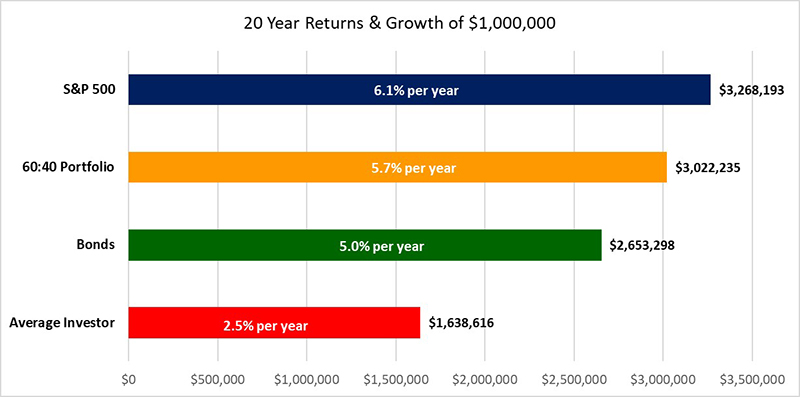Hazards to Your Wealth
Bias blind spots

Humans are instinctual and have biases. The spontaneity, quick reactions, optimism, confidence, ingenuity, and emotion are all traits that we admire and have served humanity well. Who else would try to take on a six-ton Mammoth with sticks and stones and think they could pull it off except our crazy ancestors? The descendants of whom later went on to build pyramids, cities, industrial machines, and technologies that our stick throwing ancestors would have never dreamed of. The confidence needed to hunt big game and the primal instinct to react and run from any sound or shadow lurking in the grass, fearful it might be a saber tooth tiger, served us well for hundreds of thousands of years while we roamed as hunter-gatherers. However, in today’s modern world, those same human instincts and biases which remain ingrained in investors and the financial advisers that serve them can be hazardous to your wealth. So dangerous that bias blind spots have cost the average investor 3.2% per year over the past 20 years. To put this in perspective, a $1,000,000 hypothetical portfolio would have grown to over $3 million over the past 20 years had they simply invested in a 60:40 balanced portfolio and not touched it. Instead, with the average investor return, that $1,000,000 would have grown to only $1.6 million costing the investor $1.4 million in this example. On average, investors’ biased actions detracted from returns. It is unlikely we humans can eliminate our ingrained biases, but we can learn to identify them and moderate them when making critical financial decisions such as investing. In this report, we will identify a few of the more prevalent investor biases, the mistakes they can cause, and how to protect your wealth from your bias blind spots.

Source: Bloomberg, Greenwich Advisors, DALBAR
Human brains have evolved, yet remnants of our ancestral brain remain. The fearful, reactive, overconfident, instinctive, and emotional brain, we will call caveman’s brain, and the evolved part of the brain that is logical, calculating, and able to assign probabilities, we will call our renaissance man brain. They compete for our attention, and both have their strengths and weakness and biases. The two main categories of human biases are renaissance man errors that result from faulty information processing or data analysis, errors which are called cognitive errors, whereas our caveman’s brain has biases that arise from emotions, feelings, or intuition, which are classified as emotional errors. Both cognitive and emotional errors can cause poor financial outcomes, but cognitive errors are detectible and can be moderated.
For most people, the emotional distress felt during losses is about double the joy of gains when comparing similar dollar amounts of profit and loss (Kahneman & Tversky, 1979). There is a frequently noticed pattern of investors holding onto an investment only because it has declined in value. Disposing of the asset would realize the loss while keeping the investment is justified by the investor because they are anchored in the original purchase price, hoping the market price recovers to it. Delaying can postpone the pain of realizing the loss. Conversely, when investments start to appreciate, investors frequently sell quickly to realize the gain and avoid the possibility of declines and future losses. This type of error is called the “Disposition Effect” and is repeatedly observed in the financial markets. It results in portfolios that are poorly positioned for the future, devoid of profitable appreciating investments, and full of unprofitable declining investments. Avoid this loss aversion bias by letting your winning investments appreciate and cutting your losses more quickly.
Study after study has shown that very few funds can outperform over the long term. Only about 20% of the funds do. Besides, funds that outperform in a single year, frequently revert to average or below-average performance in subsequent years. That does not stop overconfident investors from plowing into the hot fund manager of last year in hopes of finding the next Warren Buffett. As funds decline and investors’ losses are realized, there is always another hot performer of the year with whom to invest. This repetitive chasing of last year’s winners is a form of “Representativeness Bias,” where investors process and place too much information on new pieces of information. Investors sometimes process new information quickly and put it into a category that best fits their previous experiences or belief systems. Too much weight is placed on a new piece of information, like a single year of fund performance, rather than looking at large sample sizes of multiple years of performance of many funds and strategies. This continual selling of losses and chasing hot investments is a significant reason the average individual investor performed poorly over the past 20 years.
The big saber tooth tiger in the room is when our caveman’s brain comes alive, raises his inner voice to you and drowns out our logical brain. Beware of this bias blind spot. When stakes are high, stress levels are high, problems are complex, and information is changing, our caveman brain can highjack your decision-making process (Klein, 1998). This hijacking of our caveman’s brain was corroborated and shown that the stress resulting from high volatility during a market crisis was enough to overcome investors’ prior unwillingness to realize a loss and induce them to sell their investments at even more significant losses than before (Dacey & Zielonka, 2013). Selling during bear markets is a major contributing factor why the average individual investor performed so poorly over the past 20 years.
Lao Tzu observed, “Those who have knowledge don’t predict. Those who predict don’t have knowledge. (Tzu, 6th Century BC)” When decisions are complex and require great cognitive effort, as is necessary when investing, people routinely prefer expert predictions to facilitate the thinking process. Because of this, investors pin false hopes on top-tier-wall street strategists or analysts to tell them what to do. Study after study has shown that wall street analysts have no reliable ability to forecast earnings with any accuracy beyond a year. No wall street strategist has demonstrated the ability to consistently predict where the S&P 500 will be 12 months from now, where the price of oil will be, where the USDEUR currency cross rate will be, or where the 30 year US Treasury Bond interest rate will be. Prior predictive success proved either random, lucky, or both and not repeatable. So why investors pay the hefty price to invest with old wall street firms and continue to put faith in these wall street predictions is beyond me. Maybe the US Open box seats make up for it.
Conclusion
Bull markets and bear markets are just part of investing and trying to predict their timing is nearly impossible. Therefore, I suggest instead of predicting bull and bear markets, one prepares for them in advance as part of the planning process. During both bull and bear markets, rebalance portfolios dynamically not statically. We reduce investments or assets classes that have appreciated the most and have become a disproportionate size relative to your portfolio, reallocating assets to assets that are less than the desired allocation weight. Volatility eventually will come. It is part of investing, so let it work for you. Then, diversify broadly so that one investment or one sector does not dictate your financial outcome. Finally, do not go it alone. When the volatility comes, and you sense a lion in the shadows, resist that caveman brain impulse to sell and flee. Have an experienced and trusted adviser working with you to keep things in perspective and to help you keep an eye on your bias blind spots and your eye on the prize.
D. Chris Tucker, CFA
Chief Investment Officer
Works Cited
Dacey, & Zielonka. (2013). High Volatility Eliminates the Disposition Effect in a Market Crisis.
Kahneman, D., & Tversky, A. (1979). Prospect Theory: An Analysis of Decision under Risk.
Klein, G. (1998). Sources of Power: How People Make Decisions.
Tzu, L. (6th Century BC). Tao Te Ching.


